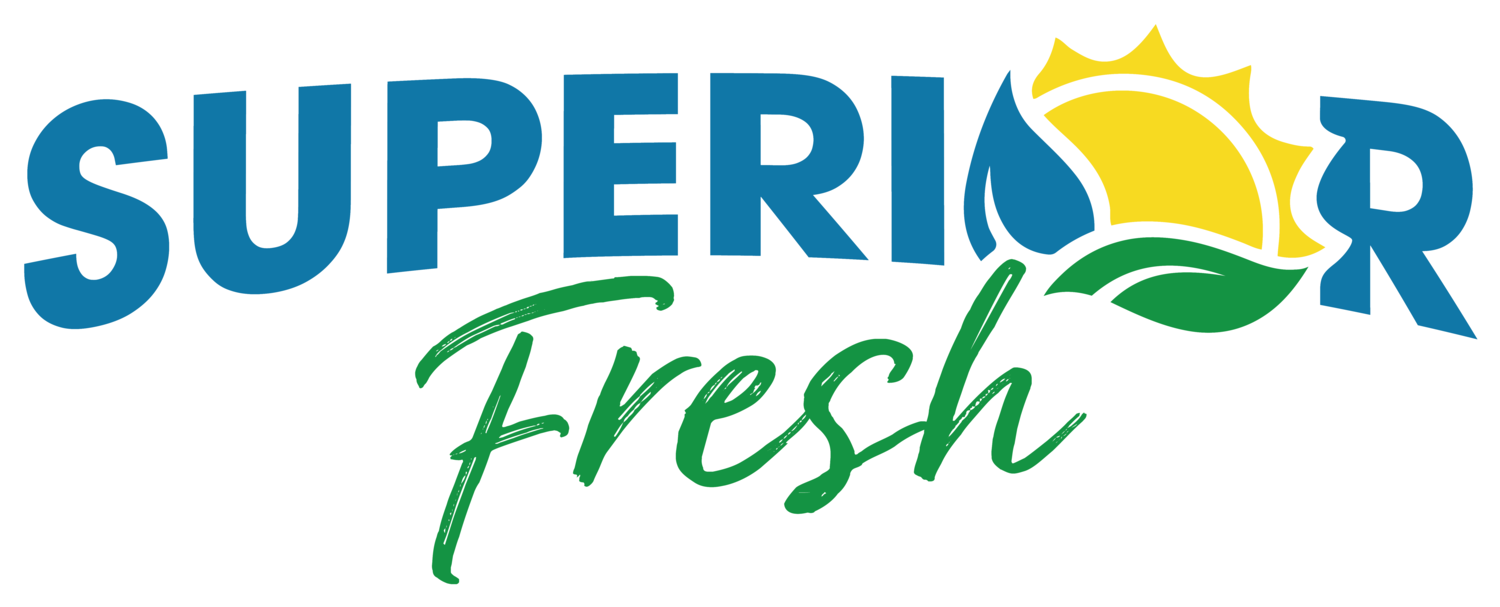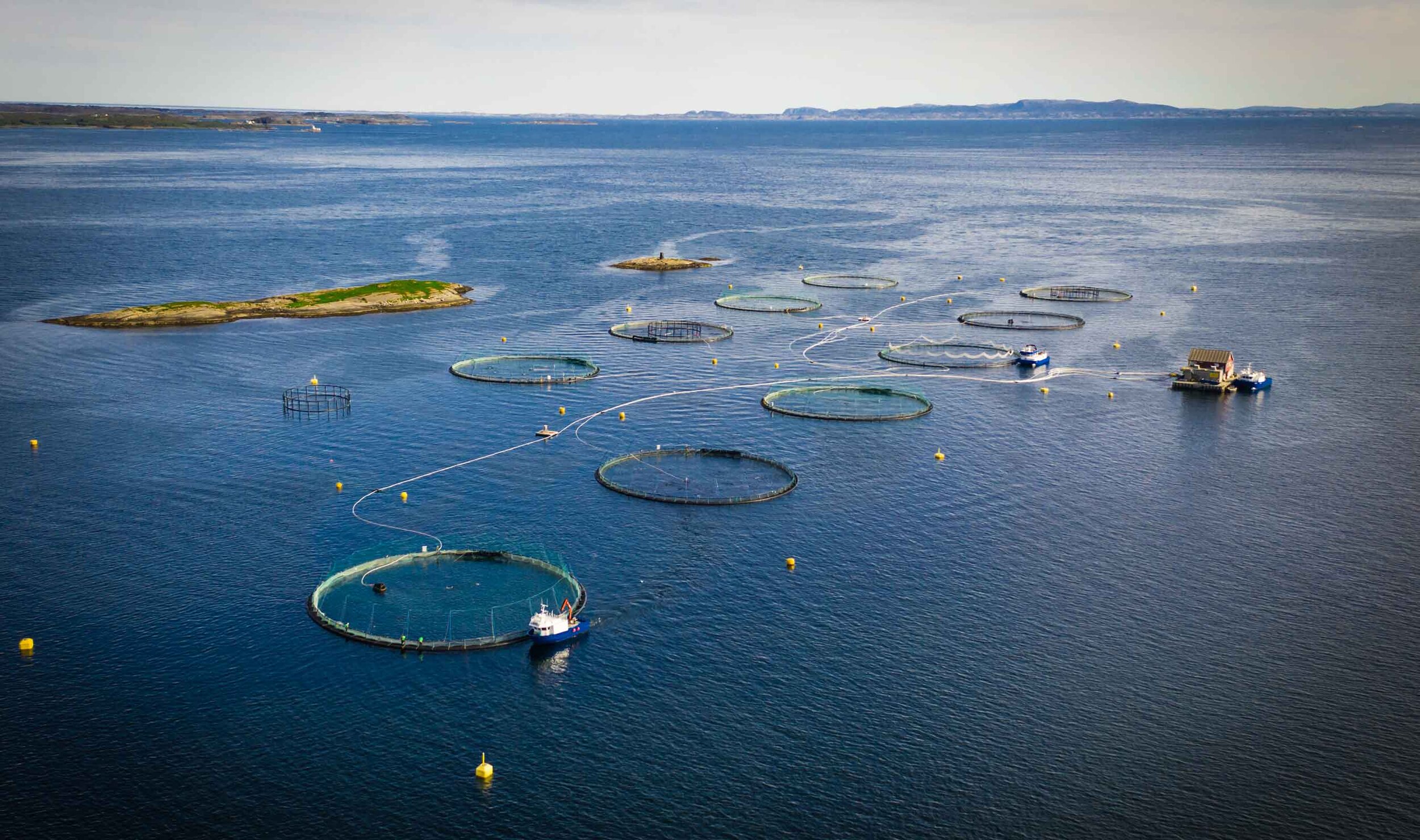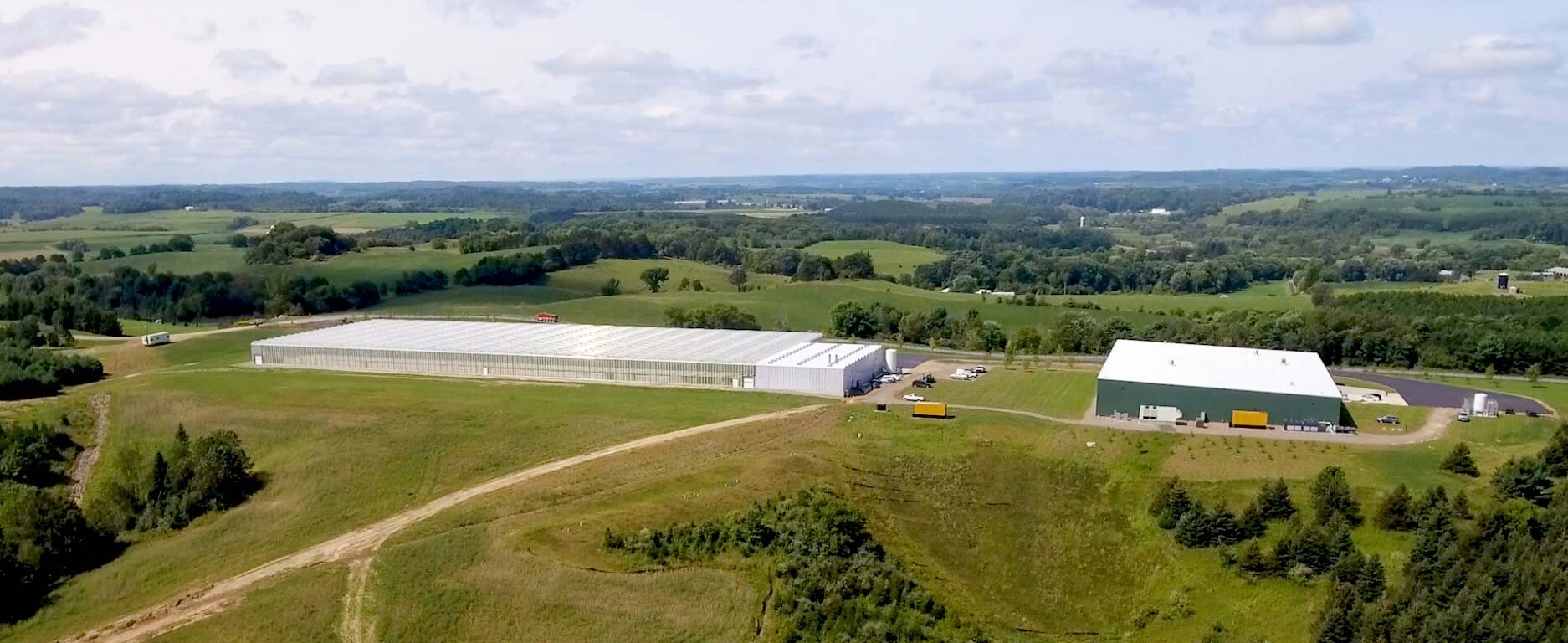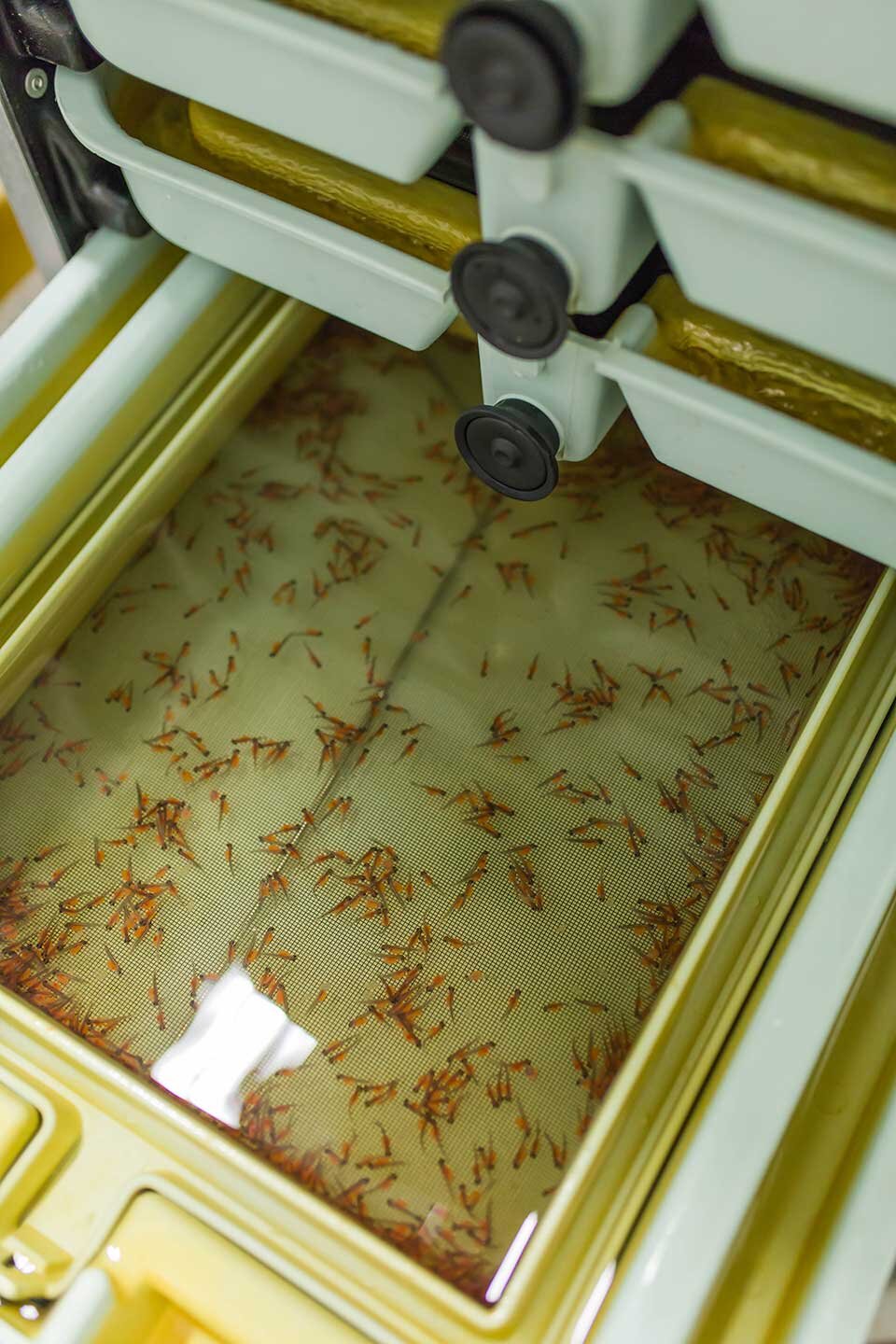What’s the Story Behind Your Supermarket Salmon?
By the time it reaches the cooler, it can be hard to tell much about the salmon in your supermarket’s seafood section. Some retailers include information about whether the fish was farmed or wild-caught, domestic or imported, etc., but, as we’re about to learn, the world of farmed fish is a nuanced one, and not all salmon is created equal.
Wild-Caught Salmon
U.S.-based commercial fisheries landed over 1 billion pounds of salmon in 2017 (the most recent year for which national totals are available). Alaskan fisheries account for 97% of total landings, bringing in 985,894,408 lbs. Because wild Atlantic salmon is an endangered species, fishing for it is prohibited in most of the world. This means that the overwhelming majority of wild-caught salmon sold in supermarkets are Pacific salmon, of which there are several distinct species, including pink, sockeye, coho, chum, and Chinook. Wild-caught Chinook salmon is highly prized, earning fishing fleets an average of $4.64/lb. in 2017. Pink salmon is the most plentiful variety, accounting for 49% of total landings (495,321,971 lbs.), but averaging only $0.33/lb.
Fishing practices
Pacific salmon are usually caught as they migrate from the ocean back to their freshwater spawning grounds. While coho and chinook salmon will strike baited hooks or lures, sockeye and pink salmon, which eat primarily krill and plankton, generally won’t. Commercial fisheries use two types of nets to catch the majority of the fish: purse seine nets and gillnets. These nets have common characteristics: they hang vertically in the water, stretched taut between a weighted bottom line and buoyed top line, forming a sort of “curtain”. In the case of gillnets, this curtain extends horizontally. Fish swim into the netting and become caught in the mesh, which is designed to allow the fish’s head to fit through, but not its body. When the fish attempts to back out of the net, its gills become caught. Increased agitation and struggling typically results in the fish further entangling itself in the net.
Purse seine nets are functionally similar to gillnets in that they are also suspended between a buoyed top line and weighted bottom line, but rather than being extended horizontally, they encircle the fish. These nets are equipped with a lead line that allows the bottom of the net to be drawn together (much like a purse string), preventing the fish from escaping.
Environmental impact
Both purse seine nets and gillnets are non-selective, meaning they capture anything that becomes caught in them, including protected species and marine mammals. Species that are frequently caught include bottlenose dolphins, humpback whales, and sea turtles. While it is sometimes possible to extricate and release these creatures in time for them to survive, they are often injured or even killed by the sheer weight of the catch or as a result of injuries sustained as they struggle against the net. Globally, commercial fisheries were responsible for the deaths of 650,000 whales, dolphins, and seals each year throughout the 1990s.
Farmed Salmon
As of 2018, farmed fish comprised roughly 73% of the world’s salmon supply. When it comes to salmon, the term “farmed” generally refers to the practice of raising fish in marine cages: large enclosures located in sheltered waters, such as fjords or bays. Atlantic salmon are the primary species farmed, although small numbers of coho and Chinook salmon are also produced. The biggest global producers of farmed Atlantic salmon are Norway, Chile, Scotland, and Canada.
How fish farming works
The salmon farming production process takes about three years. Initially, salmon are kept in freshwater systems. After about a year, they are relocated to seawater cages, where they undergo smoltification and, after roughly two more years, grow to harvest size.
Environmental impact
Salmon farms contain large numbers of fish in close proximity to natural marine ecosystems; this population density combined with the fact that the fish are unable to follow normal migratory patterns leads to high concentrations of waste material, polluting the water and adversely affecting local marine life. Cage culture captures none of the waste material, which is dispersed or settles below the cages in otherwise pristine coastal environments. Disease and parasites proliferate quickly in crowded net pens, posing a threat to wild populations. Sea lice, parasites that prey primarily on salmon, are becoming particularly problematic in this regard; a recent report from the Scottish Salmon Producers Organisation (SSPO) shows that total sea lice numbers on Scottish salmon farms nearly doubled in a single year (April 2018 to April 2019). Sea lice outbreaks in caged salmon are often treated by adding pesticides to the fish feed.
According to NOAA, over 90% of the seafood consumed in the United States of America is imported. Salmon is one of the main imported species; 387,061 tons of fresh and frozen salmon (valued at $3.9 billion) was imported in 2018. The resources required to transport so many tons of fish over such great distances are astronomical, particularly when flown in fresh from Chile or Norway.
Land-Based Salmon
The latest innovation in salmon farming, land-based systems use recirculating aquaculture to raise salmon in tanks. While this method is still relatively new, it is projected that land-based farms will produce 500,000 metric tons of salmon by 2026, an amount equivalent to 21% of 2017’s global production (2.3 million metric tons).
Superior Fresh Salmon
Superior Fresh is the first land-based salmon producer in the U.S., and the largest aquaponic farm in the world. An aquaponic system is when a recirculating aquaculture system is combined with a hydroponic system.
How aquaponics works
Aquaculture and aquaponics are related, but distinct; for our purposes, we will explain how our aquaponic farm works. We incubate our eggs in our onsite hatching room. Once they hatch, our fish are raised in a totally closed system where we control all inputs and outputs. They are fed an organic diet rich in fishmeal and fish oil harvested from sustainable fisheries. Maintaining fish welfare is paramount throughout the production process. Sea lice and obligate pathogens are excluded to sustain fish health. Rotational velocity of the water in each tank is specific to the size of the fish, allowing them to swim continuously and receive proper exercise. Waste material is perpetually drawn out, while fresh, clean water is added, ensuring optimal water quality.
When the fish are about six months old, we cue smoltification by controlling the amount of light they receive to mimic nature. As the fish enter adolescence, they are moved to growout tanks where they continue growing for another year. Once they have reached 10 pounds, we harvest and process each fish by hand.
Because our fish are raised in controlled systems, they are protected from diseases and environmental contaminants (such and PCBs and heavy metals) that occur in river and ocean environments. Consequently, our fish are never fed or treated with antibiotics or pesticides.
Environmental impact
Historically, access to fresh seafood has been limited to coastal regions, or has required transporting food thousands of miles. One of the benefits of raising salmon on land is that it can be done virtually anywhere, i.e., adjacent to major markets to supply local, fresh salmon, eliminating the need to transport the fish over long distances and vastly reducing its carbon footprint. Fish in controlled systems cannot escape and do not interact with or impact wild populations.
In a typical land-based aquaculture system, the waste material produced by the fish must be removed, treated, and sometimes discharged. In aquaponics, that waste is repurposed. Nitrifying bacteria convert ammonia into nitrites and then nitrates, resulting in nutrient-rich water ideal for growing plants. Once the plants absorb the nutrients, clean water is returned to the fish house. At Superior Fresh, we produce 3 million pounds of organic leafy greens and 160,000 pounds of premium salmon each year, and we do it without wasting a single drop of water. Our process is so efficient that for every 1.1 pounds of food we feed our fish, we harvest 1 pound of salmon, for a feed conversion ratio (FCR) of 1.1:1 (for context, the FCR for beef is approximately 10:1).
We distribute our products locally; in addition to minimizing our carbon footprint, our aim is to supply our customers in the Midwest with fresh leafy greens and locally raised salmon, year-round.
Best Choice
The Monterey Bay Aquarium's Seafood Watch program has ranked Superior Fresh salmon a "Best Choice" for consumers, while ranking most other farmed salmon “Avoid”. Our salmon also have substantially higher omega-3 levels than other fish sampled in our market region — often double! This is because fish oil is the only lipid source in the organic feed we use, and it naturally contains high levels of omega-3s (the good stuff) and low levels of omega-6s (vegetable oils). Other farmed fish are typically fed a diet that contains substantial levels of vegetable oils instead of fish oil, to reduce cost.










